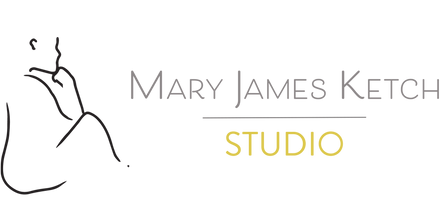How to Be a Self-Taught Artist
As the story goes, I’m a self-taught painter. But I have a bit of a problem with that label. Firstly, I think ALL painters are self-taught. Nothing replaces the hours spent by yourself at the easel, figuring out the paint (or whatever your medium) by yourself, perhaps crying a little and then perhaps sulking then becoming extremely excited only to begin sulking again. It’s an important process all artists go through.
Secondly, I think NO artists are self-taught (well, except for maybe a very few). Just by opening your eyes, you become aware of what other artists are doing and what you like and don’t like. And certainly there are classes, workshops, and books. Y’all know I love learning, and I’ve thought more than once I took up painting so I could begin exploring a new section of the library.
Here are my top 3 book recommendations if you are interested in becoming a “self-taught” artist like I am.
Drawing on the Left Side of the Brain by Betty Edwards
Wish you had some of those fabulous life drawing skills? Betty Edwards believes that art skills can be taught similarly as the way reading can be taught. We don’t throw books at children without any guidance and call the ones who can read “talented.” Full of exercises that are fun and encouraging.
The Age of Insight: The Quest to Understand the Unconscious in Art, Mind, and Brain, from Vienna 1900 to the Present by Eric Kandel
I waffled for years as to whether or not I should recommend this book because much like its title, it is thick and dense and long. Written by a neuroscientist, it really could have been edited to half or even a third of its length and retitled “Your Brain on Art.” But I’ve decided to go ahead and recommend it, because there is information in here that has stuck with me for years, things I have never come across in other books and have definitely affected the way I paint. If you like neuroscience like I do, this is the book for you.
Composition: Understanding Line, Notan and Color by Arthur Wesley Dow
This guy was Georgia O’Keeffe’s teacher. Or her teacher’s teacher. I forget. Anyway, she credits him for completely changing her art. And if it’s good enough for O’Keeffe, it’s good enough for us. Written in 1920, the text is a little dry, but really, principles of composition do not change through time. Stare at the pretty pictures and you will begin to intuit good art just like sexing a chicken.
Mary, what is sexing a chicken? Funny you should ask. After a baby chick has hatched it is separated into male or female so the next stage of its life path can continue. The problem is, there is no obvious thing that one can point to and say “that’s a boy or a girl chick.” The only way to train a future chicken sexer is to stand next to a master chicken sexer who says “hen” or “rooster” without ever explaining anything. Eventually, the student chicken sexer begins to inuit the sex of the chicken but no one knows why. Crazy, right?
I think the thing I miss most about not getting my art education in a “proper classroom” is the shoulder to shoulder experience of working next to other artists. And if HGTV has taught us anything, it’s that we really like watching other people work.
With that spirit in mind, I created an online class simply called “In the Studio with Mary James Ketch” which will be available beginning on the 28th. In this class, I’m creating a floral painting from beginning to end, and I will be telling you more about it next week if you are interested.
Until then, do you have any favorite art books?

